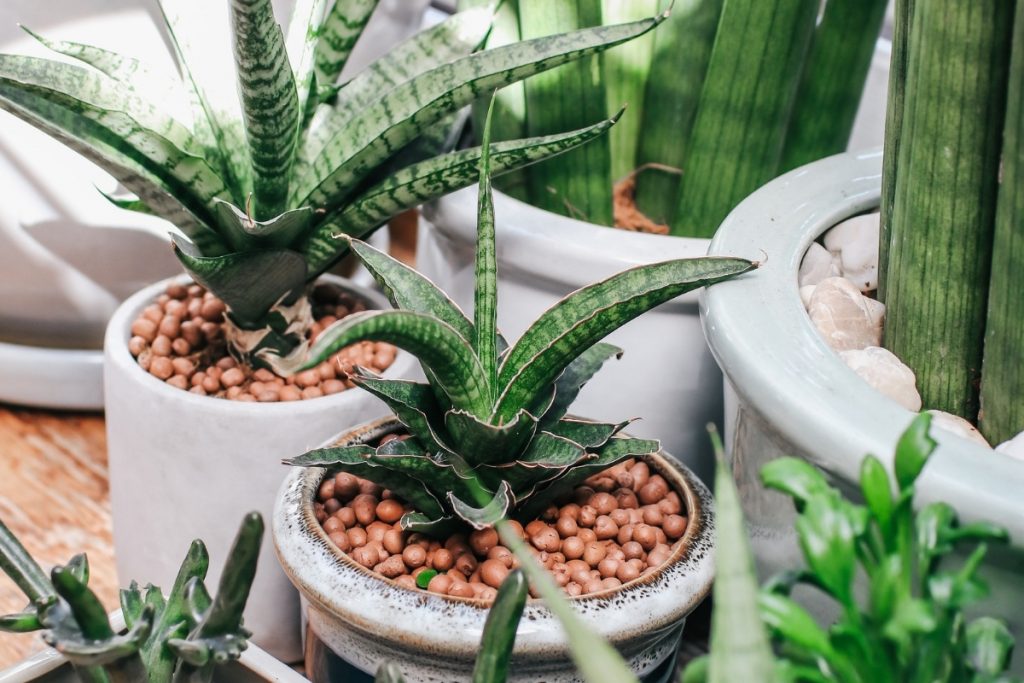Table of Contents
The Benefits of Leca For Plants
When growing plants in a Leca, you should soak the roots overnight or for a few hours. Then remove the plant from its potting medium and wash it well to get rid of any dead plant matter and clean the roots. Make sure the soil is free of pesticides and dead plant matter. Once re-potted, it will be easier to maintain and grow plants in the Leca. Here are some benefits of this system.
Less soil-based pests
Soil is the best place to control insects. There are literally thousands of different types of insects that make the soil their home. While some pests spend time in the soil seasonally, others are in the soil all year round. Fortunately, there are several steps you can take to minimize the number of these pests. Here are six of the most common types of insects that commonly attack plants. Listed below are some of the most common and effective ways to control them naturally.
Healthy soil is more resistant to insect attack. Some soil-management practices are effective in increasing the plants’ defense mechanisms and making them less attractive to pests. These practices not only minimize the threat from pests, but also build beneficial insects. When used together, these tactics will help reduce the amount of soil-based pests while maximizing plant growth. In addition to these tactics, using several of these practices will reduce the chances of the pests adapting to the new conditions in the soil.
Check the roots of newly purchased plants for signs of pests. Ensure that the roots of the plant have been washed thoroughly. If you notice any, remove the plant immediately and isolate it for at least two weeks. Water and the soil on the surface of a newly acquired plant may have pests or other problems. Use a ten-power hand magnifying lens to inspect the roots, soil, and plant parts. In addition, you can use a smartphone app that helps detect pests and insects.
Better aeration
A bell siphon is the most effective tool for better aeration with leca for plants. The siphon allows water to fill the leca until the stem of the plant is covered, and then drains it. This flood and drain cycle occurs frequently. Leca is also a great way to propagate plants. Its soil-less nature eliminates many of the problems that are associated with soil-grown plants.
To get started, you will need a grow tray, reservoir, and wick. Once you’ve got these items, you need to install an aeration system. You will also need an airstone and pump. The airstone will distribute oxygen throughout the water, ensuring healthy plants. When placing the plants in the containers, you need to make sure that their pots are always in contact with water. Microfibre cloths will help keep the water moist.
The benefits of using a leca for plants are numerous. It is ideal for people who don’t have a lot of time to spend on soil-based plant care. It rolls everywhere and is less likely to grind up carpets. However, it is important to note that the initial investment is not small. For most people, the initial cost may be too high. For this reason, many people opt for a less expensive alternative.
LECA provides excellent aeration and is dust-free. If mixed properly, the leca and soil mixtures can provide the water and nutrients that houseplants need for growth. Overwatering a plant may cause root rot, and a diseased plant will become more vulnerable to pests. A poorly aerated plant will die, so a good solution is aerating the soil with leca.
Another benefit of LECA is that the plant roots are able to get the right amount of water without worrying about overwatering. Moreover, the clay balls act as a stabilizing structure for the growing plants. The best thing about LECA for plants is that you can buy it online and use it over again. You can find a variety of sizes at Etsy stores. However, it is more common to use it as a replacement for the soil.
Predictable watering
Depending on where you live, LECA may be a good option for you. This method is often lower maintenance, but there are some cons as well. Using Leca can reduce the amount of fertilizer you need to apply to plants and can improve drainage. This product also provides extra structure to the soil, ensuring that it stays light and allows enough oxygen through to the roots. The only downfall is the high cost.
The first benefit is that Leca clay balls do not have living organisms that can attract pests. This enables you to water plants without having to worry about spilling the water or worrying about spider mites. The other benefit is that the clay balls contain air pockets, and the honeycomb structure allows oxygen to get to the plant’s roots. This means your plants won’t suffer from the risk of bacterial or fungal infections that come with a constant flow of water.
Another benefit of using Leca for plants is that it is predictable. No more dipping your finger in the soil to determine when it needs water. Instead of having to remember when to water, you just need to monitor the water level in the container and refresh it as needed. That’s all there is to it! It’s that simple! And with the added benefit of being reusable, LECA is definitely a great option for those who have an infrequent watering schedule.
A second benefit of using LECA is that it allows users to adjust pH levels and control the nutrient balance. They can use the products that have “pH up” and “pH down” in liquid or dry form. Just follow the directions on the bottle. These products are designed for use with a hydroponic system, and a digital pH meter is recommended for accurate readings. This is an excellent way to monitor pH levels, so consider buying one.
Before switching your plants from soil to Leca, make sure to clean the roots of your plants thoroughly to remove any dust or dirt. Depending on how many Leca you have, this process may take some time. However, if you are looking for a low-maintenance way to transition your plants, you can check out thrift stores for cheap glass containers. You can even try mason jars, though these are a bit boring!
Easy to clean
You might have heard about the ease of cleaning LECA for plants. Anyone who has ever grown plants indoors knows how messy the soil can be. LECA is a great alternative to soil, since it creates very little dust when you open it. However, if you have never used a LECA before, you might not be entirely sure what you’re doing. Here are a few things to consider before using LECA for plants.
Before you begin using a LECA, you should first remove the soil from the plants. It can be as easy as soaking the plants in water for a few hours, or even overnight. You can then take them out of their potting medium and wash them well in clean water. Make sure to remove all dead plant matter from the roots. After cleaning them, you can use the leca again for other plants. Make sure to follow the instructions on the packaging.
Before using a LECA, you must ensure that the water pH level is the right one. Most houseplants require a pH level of 5.5 to 6.5. If your pH level is below that level, you should add a pH up or down nutrient solution. LECA is also known as expanded clay and it is made from clay. The heat in the LECA creates thousands of tiny air bubbles, which give the LECA its pseudo-circular shape. LECA is also commonly used in lightweight concrete products and building materials.
Another type of LECA is known as “Leca” or clay pebbles. This medium is a low maintenance growing medium that is great for beginners. Leca makes propagation of plants much easier and helps plants grow healthier. LECA allows you to see symptoms of the disease or pest infestation more easily. They’re also very easy to clean, making them an excellent choice for beginners. These pots don’t require frequent watering and look good in any type of pot.


